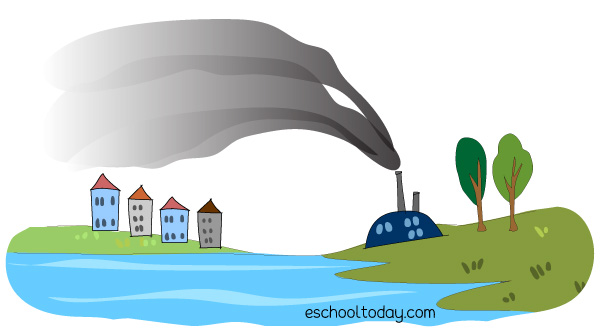- Air Pollution
What is air pollution?
Air pollution occurs when gases, dust particles, fumes (smoke), or odors are introduced into the atmosphere in a way that makes it harmful to humans, animals, and plants. Air pollution results in the air being dirty (contaminated, unclean, and often toxic).
The Earth is surrounded by a blanket of air (made up of various gases) called the atmosphere. The atmosphere helps protect the Earth and allows life to exist. Without it, we would be burned by the intense heat of the sun during the day or frozen by the low temperatures at night.
Any additional gas, particles, or odors that are introduced into the air (either by nature or human activity) to distort this natural balance and cause harm to organisms can be called air pollution.

Things that pollute the air are called pollutants. Examples of pollutants include nitrogen oxides, carbon monoxides, hydrocarbons, sulfur oxides (usually from factories), sand or dust particles, and organic compounds that can evaporate and enter the atmosphere.
There are two types of pollutants:
Primary pollutants are those gases or particles that are pumped into the air to make it unclean. They include carbon monoxide from automobile (cars) exhausts and sulfur dioxide from the combustion of coal.
Secondary pollutants: When pollutants in the air mix up in a chemical reaction, they form an even more dangerous chemical. Photochemical smog is an example of this and is a secondary pollutant.
Why is air pollution such an important issue today? Click to find out
New Word: Ambient Air Pollution
It is outdoor air pollution, usually caused by emissions from transportation, power generations, agriculture, and open burning. The chemicals in Ambient Air Pollution is different from that of indoor air pollution.
When pollution occurs in the air, it can easily travel and spread, and because we breathe in the air, we cannot easily avoid it.
